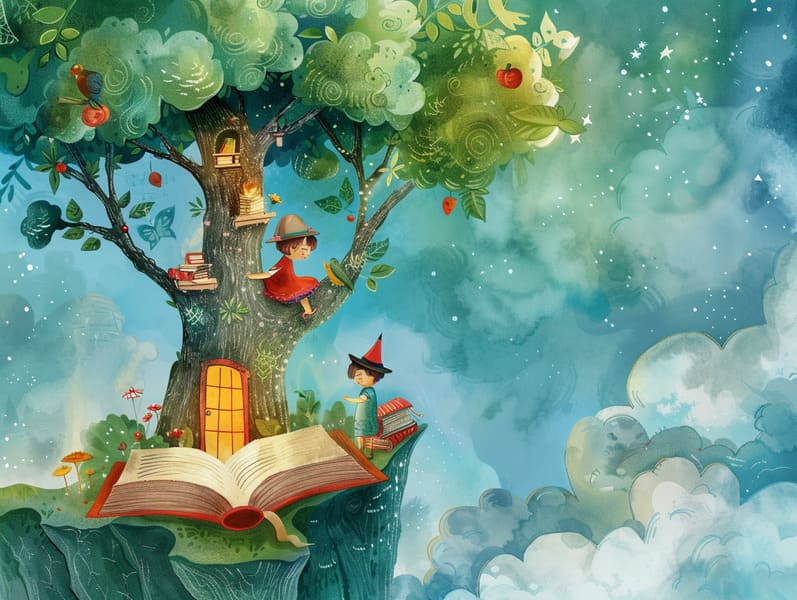Tracing the Heritage of Best Fairy Tales with the Enduring Delight.
Tracing the Heritage of Best Fairy Tales with the Enduring Delight.
Blog Article

Old fairy tales have timeless appeal. These stories have been whispered from one generation to the next centuries before they were ever inscribed. They came from a variety of traditions, including Indigenous traditions. They were initially told among adults, often carrying themes and messages concerning the societal norms and beliefs of the time.
The Brothers Grimm, Jacob and Wilhelm (the Grimm brothers), were among the first to gather many of these beloved fairy tales. Their compilation, "Grimm's Fairy Tales," included narratives like "Cinderella," "Hansel and Gretel," and "Snow White," which have since become hallmarks in the world of traditional fairy tales. Similarly, the Danish author's imaginative narratives, such as "The Little Mermaid," and "The Duckling that Could," have stolen hearts worldwide, securing their place in the pantheon of treasured fairy tales.
Even though they are old, classic fairy tales remain as applicable as ever, especially as nighttime stories for kids. These charming stories are now available in numerous formats, including vividly illustrated books, captivating animations, and web-based fairy tales.
Their continued relevance can be ascribed to several enchanting factors:
Important Morals: Timeless fairy tales often teach important moral lessons. Fairy tales like "The Boy Who Cried Wolf" teach the benefit of integrity, while "The Story of the Tortoise and the Hare" underline the benefits of steadfastness and unpretentiousness. These narratives offer young ones clear distinctions between virtue and vice, molding their moral compass in a tender yet meaningful way.
Compassion and Knowledge: Fairy tales frequently present protagonists facing challenges and struggles, inciting young listeners to identify with their struggles and boost their triumphs. For instance, "The Tale of Beauty and the Beast" conveys the necessity of looking deeper to understand the true character of a person, strengthening sympathy and appreciation.
Cultural Comprehension: Many classic fairy tales are steeped in the cultural contexts from which they came. Engaging with these stories can provide captivating looks into different customs, strengthening a sense of global understanding and knowledge.
Inventiveness and Imagination: The magical elements in fairy tales—mythical entities—fuel children’s fantastical thinking. These tales take readers to enchanted realms, fostering creative thinking and a sense of marvel that continues a lifetime.
Traditional fairy tales are not only bewitching but also didactic. They act as spellbinding tools in fostering various thinking and feeling skills in little ones. When timeless fairy tales are read aloud, they nurture communication skills by offering new lexicon and intricate sentence structures. This practice also cultivates hearing perception and attentiveness, as young readers focus on every detail, looking forward to see what happens next.
Furthermore, debating the themes and characters of traditional fairy tales can improve thinking skills and logical thinking. Children are shown to pinpoint patterns, expect results, and make sense of cause and effect. These discussions also contribute to little ones communicate their thoughts and feelings, enhancing their emotional intelligence.
In today’s digital age, the presence of web-based fairy tales has made these fairy tales more obtainable than ever. Internet resources and programs present comprehensive collections of timeless fairy tales that can be seen or played anytime, anywhere. Fairy tales spoken are particularly common, presenting an interactive method for young ones to delight in these mesmerizing stories. Read-aloud books and read-to-me stories move characters and settings to life, often augmented by whimsical sound effects and tunes that amplify the narrative adventure.
The unfading fascination of traditional fairy tales lies in their ability to alter to modern times while maintaining their key morals. Contemporary reinterpretations of these tales often showcase more inclusive figures and modern settings, making them understandable to today’s audience. However, the core values of courage, benevolence, and integrity remain unchanged, continuing to connect with kids of all ages.
Ancient fairy tales also offer a sense of contentment and knownness. They present to a well-ordered narrative with a evident beginning, middle, and end, often closing with the wrap-up of conflicts and the triumph of goodness over badness. This foreseeability can be placating for children, sharing a sense of solidity in an variable more info world.
Ancient fairy tales continue to delight and enlighten new generations, maintaining their enchantment and applicability in modern society. As nighttime stories for kids, they deliver up a perfect blend of fantasy and learning, aiding moral values, empathy, and creativity. The proliferation of online storybooks and the likability of fairy tales read aloud guarantee that these ancient stories remain accessible to new generations.
By guarding and telling these tales, we continue to honor the rich tapestry of tradition and cultural heritage. Whether you are delving into a colorful picture book, browsing a virtual collection, or listening to an sound book, the charm of children's fairy tales is always within reach. These stories show us of the steadfast influence of fairy tales and its ability to unite us across epochs and places.
No matter if you are delving into a richly illustrated book, experiencing a electronic library, or listening to an narrated book, the loveliness of timeless fairy tales is always within reach.
These tales emphasize of the unceasing force of stories and its ability to join us across generations and cultures, making a tie that enchants and educates alike.